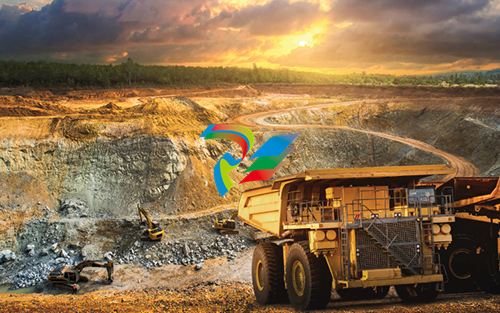
Practical IIoT and Wireless Network Practices for Modern Mining

Automation, IIoT and wireless technologies are fundamental to current mining and metals companies. These technologies are evolving quickly, producing an exciting time of growth in data collection and data sharing, expanding capability, increasing efficiency, and supporting sustainability. However, strong cybersecurity controls and governance are crucial.
Modern metals and mining companies are sophisticated and often highly automated businesses with long histories. Current macroeconomic trends and business pressures increasingly demand that operations respond to technology advances, including faster and more reliable communications. The Industrial Internet of Things (IIoT), edge and cloud computing, 5G wireless communications, and other new technology promise increased functionality, but also require new approaches to security and daily governance to protect the investments needed to support them.
Here we share practical considerations about how wireless technology combined with good cybersecurity practices can support modern industrial facilities. Our examples come from mining and metals operations but apply to modern industrial operations of all types. Our focus is on wireless communication and IIoT, where practices are less mature, use and functionality are expanding quite rapidly, and security practices need to keep up with the growing risks that the sheer volume of additional endpoints will create.
Need for near-real-time data
With sustainability increasingly guiding the central decision-making processes, production functions, and the wider enterprise, businesses expect communication and processing to happen efficiently and with the lowest possible carbon production. This translates to producing with minimum energy consumption and with the least impact on water demands and water quality. Shareholders and the wider public are demanding sound environmental, social, and governance (ESG) and best practices for energy efficiency.
The efficiency of these processes can only happen with the right data. Tracking production to a level of trace metal specificity is being increasingly requested for the related Scope 1, 2 and 3 reporting needs of the downstream production and purification companies. Companies can address requirements for such near-real-time data to support business needs separately or by a combination of wired and wireless solutions.
Communication can happen over hardware spread across the premise, or it can move wirelessly to the cloud for bulk data storage. IIoT devices deployed at industry sites communicate with field gateways/edge devices via an edge network (typically a wireless network). Data is collected from sensors and systems, analyzed at the edge hub level for real-time integration, or sent to a central cloud-based service. This data is aggregated with other data and delivered for advanced data analytics, such as digital twin, virtual reality, and value chain optimization (Figure 1).

The edge network is critical communication infrastructure that enables fleet automation, decision automation, and optimization of production processes in the pit. Through the edge network, companies manage operations and maintenance with integrated planning and live fleet updates from drills, haul trucks, shovels, sensors and unmanned aerial vehicles or drones.
Edge compute capacity is commonly achieved by deploying compute/storage hardware at the industry site data center close to the operation site. Data collected from IIoT devices can be processed quickly, and real-time integration with operational management systems takes care of hygiene, water management, energy and power quality, and product and assay management. Without IIoT, these processes would normally be manual, slower, and less accurate. With edge computing, the data reaches decision makers more quickly. Many workflows are therefore shortened, resulting in better decision making and overall plant efficiency.
Wireless trends in metals and mining
The use of wireless communication is already large and growing in mining and metals operations, often because the work is dangerous or spread over large areas. Steel is manufactured with very hot smelting processes, for example, and many operations use robotics for productivity and safety. There is a growing interest in autonomous robotic operations, including the management of in-process inventory, because these products are heavy and hard to handle.
In secondary steelmaking, requirements for speed and custom-made production volumes and grades are increasingly affecting efficiency, as these processes are added (through intelligent real-time scheduling) on top of brownfield applications and existing architectures, producing new safety scenarios and challenges. This strains existing wireless communications infrastructure.
Mines generally have similar challenges to efficiency, as well as multiple production- and safety-critical systems that are reliant on a consistent wireless connection. Mining continues to increase its levels of automation, and this includes the need for data connections to traditional (crewed) heavy mobile equipment (HME) and to autonomous or remote-controlled HME such as drills, haul trucks, excavators and dozers.













































.jpg)
.jpg)
.jpg)





.jpg)



.png)
.jpg)

.jpg)
_lVjBYb.jpg)

.jpg)
.jpg)



.jpg)
.jpg)







.jpg)

.jpg)
.jpg)











.jpg)




.jpg)
.jpg)
.jpg)
.jpg)
.jpg)
.jpg)

.jpg)

.jpg)
.jpg)
.jpg)






.jpg)


.jpg)






